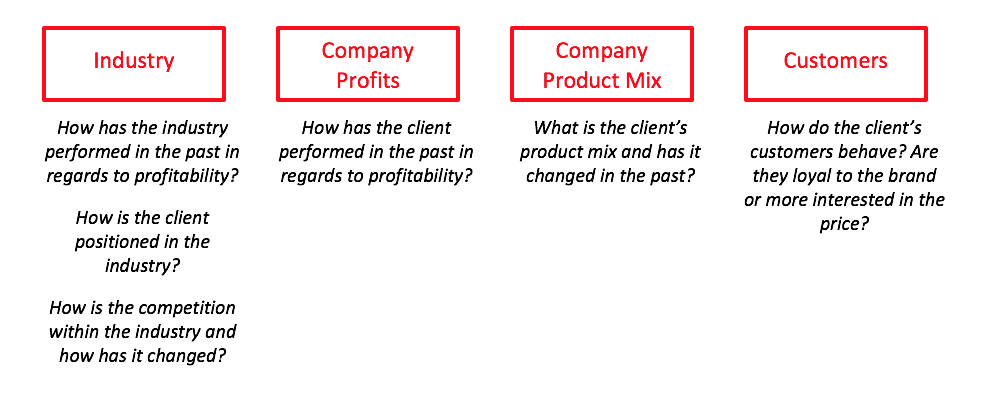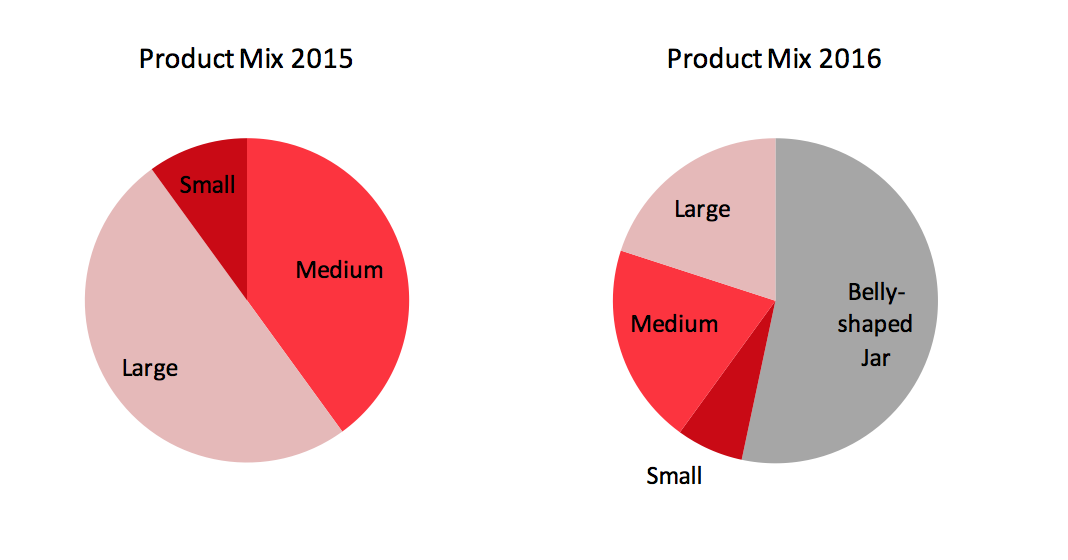Strawberry Jam — Practice Case
Client goal
The client produces strawberry jam for the US market. It experienced declining profits last year. You have been hired to investigate what caused the decline in profitability and what to do about it.
Helpful hints
- Identify and write out the objective
- Feel free to ask the interviewers for clarification and additional information if needed
- Take some time to structure a plan for approaching the problem before diving in
How do you think you should go about this problem?
Reveal Approach
A possible approach to the problem:
The main objective is to find the source of the issue of declining profits and then suggest a way to reverse this decline. We first investigate four areas of potential: industry, company profits, company product mix, and customers.

After asking aforementioned key questions, the following answers are provided
Industry: Industry profitability has been stable. The client is the market leader and has the strongest brand. Competition is unchanged from previous years
Customers: Consumers are price sensitive, but brand loyal
Company's Profits: Client has been profitable in 2015 and before. Only in 2016 has profitability been disappointing
Company's Product Mix:

Information provided after asking about aforementioned information:
- Before 2016, the client only produced standard-shaped jars (small, medium, large)
- In 2016, the client introduced a belly-shaped jar
- The belly-shaped jar has the same size as the medium standard jar
- The belly-shaped jar sells at the same price as the medium-shaped jar
We believe that the introduction of the belly-shaped jar may be a factor in declining profits. We want to investigate the value chain of the jam manufacturer to find where the change in product mix affected the profitability negatively. We look into three areas: production, distribution, profitability.
Information provided after asking about aforementioned information:
Production: When introducing the belly-shaped jar, the speed of the line filling the glasses needed to be reduced, otherwise glasses broke when filling them
Distribution: Belly-shaped jars take more room per jar on the trucks. Additionally, belly-shaped jars are more likely to break during shipping than medium sized jars
Profitability: Profit on the belly shaped and medium (standard) size jars are identical
With this information, we can present a final recommendation:
Final Answer
From our investigation, the introduction of the belly-shaped jar largely contributed to the decline in profitability last year. We recommend three potential ways to mitigate this issue, with the first suggestion as the most promising.
1. Eliminate belly-shaped jars
- Profitability of belly shaped jars is lower than for standard jars due to slower production and distribution issues
- Consumers are brand loyal and will switch back to standard jars
- Consumers are price-sensitive, hence it will be difficult to increase prices for belly-shaped jars
- Risks: losing high ground/brand leadership, competitors introduce belly-shaped jars themselves, etc.
2. Adjust production and distribution to increase profitability of belly-shaped jars
- This requires investment into improving the processes, which may or may not outweigh potential profit increases
3. Raise prices for belly-shaped jars
- This is risky due to price-sensitivity of consumers
Ending notes:
This qualitative case involved more interaction with the interviewer than the quantitative case above. It is important to lay out a structured approach before asking for information from the interviewer. The interviewer may drop hints or subtly direct you a certain way if you become off-track, so having the self-awareness to pick up those clues and adapt is key.
